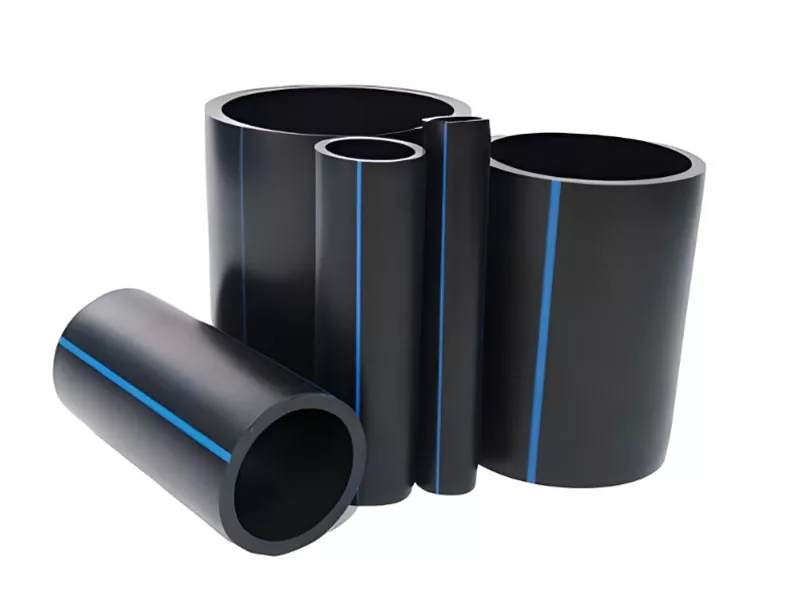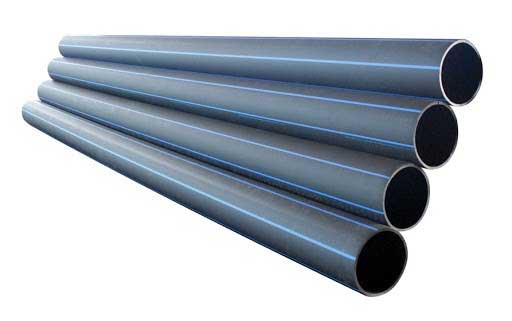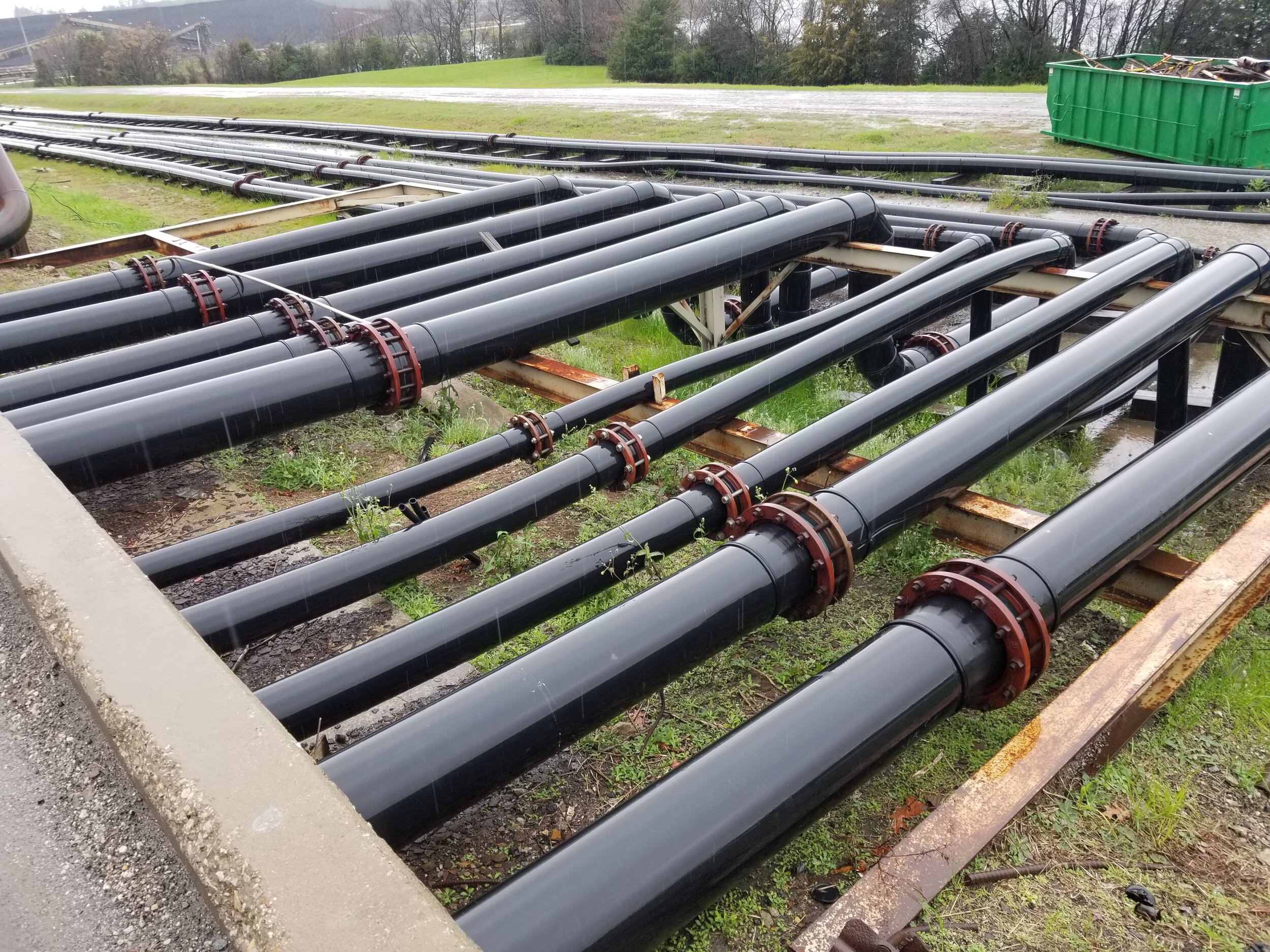Explore the Production Refine Behind High-Quality HDPE Pipeline and Its Applications
The production process of top quality HDPE pipelines is elaborate and methodical. It starts with the option of raw products that boost performance. Following this, ethylene goes through polymerization to create resin, which is after that shaped via extrusion. Quality control is extremely important, ensuring that the last product satisfies rigid criteria. However, the journey of HDPE pipelines doesn't finish with production. Their applications throughout various industries disclose a more comprehensive significance worth analyzing.
Understanding HDPE: Properties and Advantages

High-density polyethylene (HDPE) is a flexible thermoplastic known for its resilience and resistance to numerous environmental variables. This product displays exceptional tensile stamina, making it appropriate for demanding applications. Its low-density structure contributes to a light-weight item, promoting convenience of managing and setup. HDPE likewise showcases impressive resistance to chemicals, which reduces deterioration when revealed to rough substances.
The material's reduced moisture absorption additionally enhances its durability, making it optimal for usage in pipelines and tank. Additionally, HDPE is resistant to ultraviolet (UV) radiation, guaranteeing that items maintain their stability also when revealed to sunlight. Its adaptability enables for the production of elaborate forms without jeopardizing toughness. The environmentally friendly nature of HDPE, frequently stemmed from recycled materials, contributes to its charm, promoting lasting techniques in production. On the whole, these residential or commercial properties and advantages make HDPE a preferred selection for various commercial and consumer applications.
Resources Choice for HDPE Manufacturing
The selection of raw products for HDPE manufacturing is vital to validate the last product satisfies the preferred requirements and top quality standards. High-density polyethylene (HDPE) is largely created from polymerized ethylene, originated from nonrenewable fuel sources such as natural gas or unrefined oil. The quality of these feedstocks greatly affects the mechanical and thermal buildings of the final HDPE.
Additives likewise play a significant function in boosting HDPE's efficiency, consisting of anti-oxidants, UV stabilizers, and colorants, which enhance durability and resistance to ecological aspects. The choice process have to consider not just the chemical make-up of the raw products however also their handling attributes to ensure effective manufacturing.
The sourcing of raw products ought to prioritize sustainability and conformity with ecological guidelines, as accountable methods are essential in today's market. Inevitably, careful raw material choice lays the foundation for generating high-grade HDPE pipes ideal for diverse applications.
The Extrusion Refine: Shaping HDPE Pipeline
The extrusion process plays a vital duty in forming HDPE pipelines, beginning with meticulous product preparation techniques that guarantee optimal circulation and uniformity. Equally essential is the design of the die, which straight affects the final measurements and surface area high quality of the pipe. Together, these elements contribute greatly to the performance and quality of HDPE pipeline manufacturing.
Product Prep Work Strategies
Reliable manufacturing of HDPE pipelines starts with meticulous material prep work techniques, especially the extrusion procedure. Throughout this phase, high-density polyethylene resin is very first dried out to remove moisture, making sure excellent flow characteristics. The material is then fed right into the extruder, where it undergoes home heating and melting, transforming into a thick state. This heating process is thoroughly managed to keep the product's honesty and efficiency. The liquified HDPE is compelled via a die, forming it right into a continuous pipe form. Appropriate temperature monitoring throughout extrusion is Read More Here necessary, as it directly impacts the product's residential or commercial properties and the end product high quality. As soon as formed, the HDPE pipe is cooled down and cut to defined lengths, prepared for subsequent handling and applications.
Die Layout Importance
Accuracy in die layout plays an important role in the extrusion procedure of HDPE pipelines. The die offers as the final shaping tool, directly affecting the pipeline's measurements, wall surface density, and surface finish. A well-designed die assurances uniform product flow, minimizing problems such as irregularities and weak spots. The geometry of the die must be optimized to suit the specific homes of HDPE, including its thickness and thermal behavior throughout extrusion. In addition, the cooling rate of the material as it passes through the die can substantially affect the pipe's architectural integrity. Spending in advanced die technology is important for suppliers intending to create high-quality HDPE pipelines that fulfill industry requirements and client assumptions.
High Quality Control Measures in HDPE Manufacturing
Numerous factors affect the top quality of HDPE pipe manufacturing, reliable quality control actions are critical to guarantee consistency and dependability in the last item (hdpe pipe suppliers Midland TX). Trick quality assurance practices include extensive product examination, validating that the raw polyethylene fulfills established standards for pureness and thickness. Throughout the extrusion process, specifications such as temperature, pressure, and cooling time are carefully checked to maintain dimensional accuracy and structural honesty
Furthermore, post-production screening is essential; makers often carry out hydrostatic examinations to evaluate the pipeline's strength and resistance to stress. Visual inspections for surface area problems additionally improve quality control. Qualification from pertinent criteria organizations, like ASTM or ISO, offers an extra layer of credibility. By implementing these comprehensive quality assurance steps, read this manufacturers can decrease flaws, improve performance, and ensure that the HDPE pipelines satisfy the specific needs of different applications, eventually resulting in customer satisfaction and rely on the item.
Applications of HDPE Pipeline Across Industries
HDPE pipelines are used throughout numerous fields due to their resilience and convenience. In water distribution systems, they guarantee efficient distribution, while in wastewater administration, they give trusted remedies for waste transport. In addition, agricultural irrigation networks take advantage of HDPE's resistance to rust and versatility, making it an excellent option for modern farming techniques.

Water Circulation Systems
A significant variety of markets depend on high-density polyethylene (HDPE) pipelines for effective water circulation systems. Understood for their sturdiness and resistance to rust, HDPE pipes are widely made use of in local water networks, farming watering, and commercial applications. Their light-weight nature helps with simple handling and installation, minimizing labor prices and time. Additionally, HDPE pipelines can suit various pressure degrees, making them suitable for both low and high-pressure systems. Pipe Supplier American Plastics Midland. The versatility of the product enables for seamless combination right into existing infrastructure, decreasing the requirement for substantial excavation. Moreover, HDPE's resistance to chemical leaching guarantees that the water supplied continues to be safe and tidy, making it an ideal choice for preserving the top quality of safe and clean water throughout numerous sectors
Wastewater Monitoring Solutions
Efficient water circulation systems likewise pave the way for cutting-edge wastewater management services, where high-density polyethylene (HDPE) pipes play a substantial duty. Renowned for their sturdiness and resistance to rust, HDPE pipes are perfect for moving wastewater in different settings. Their versatility permits easy installment in intricate settings, reducing the requirement for extensive excavation. Furthermore, HDPE's smooth indoor surface area reduces friction, improving flow prices and effectiveness. These pipelines are likewise immune to chemical leaching, ensuring that contaminants do not broken water line compromise the surrounding environment. Industries, municipalities, and therapy facilities progressively depend on HDPE pipelines for their reliability and durability, making them a favored choice for contemporary wastewater administration systems. This versatility highlights the essential relevance of HDPE pipes across numerous applications.
Agricultural Irrigation Networks
Agricultural irrigation networks profit significantly from the use of high-density polyethylene (HDPE) pipes, which offer effective and trustworthy water distribution to plants. HDPE pipelines are lightweight, making them simple to transport and set up, while their versatility permits different setups in varied surfaces. These pipelines show outstanding resistance to deterioration, chemicals, and UV radiation, making certain longevity in harsh agricultural settings. Additionally, their smooth indoor surface lessens friction loss, maximizing water circulation and reducing power expenses connected with pumping. The durability of HDPE pipes, often surpassing 50 years, adds to reduce maintenance and substitute costs. Farmers significantly depend on HDPE pipelines to improve irrigation performance and promote sustainable farming methods, ultimately leading to boosted plant yields and resource preservation.

Future Trends in HDPE Pipe Modern Technology
As the demand for lasting and effective infrastructure expands, improvements in HDPE pipe modern technology are positioned to transform numerous markets. Emerging patterns include the combination of smart innovations, such as sensors and IoT capacities, which facilitate real-time tracking of pipe conditions, reducing upkeep costs and preventing leaks. In addition, the development of innovative manufacturing methods, such as 3D printing, is making it possible for the production of facility, customized pipeline designs that deal with particular task demands.
The focus on recycling and round economic climate practices is driving the technology of HDPE pipes made from recycled products, enhancing sustainability. Improved jointing methods, such as electro-fusion and mechanical installations, are likewise improving installation performance and dependability. The growing focus on environmental guidelines is pushing producers to embrace greener production processes, making certain that HDPE pipelines not only satisfy industry standards yet additionally promote a more sustainable future for framework growth.
Frequently Asked Inquiries
Just How Does HDPE Contrast to Other Plastic Products?
HDPE outshines numerous other plastic products relating to longevity, chemical resistance, and adaptability. Its reduced thickness and high tensile strength make it ideal for numerous applications, frequently going beyond alternatives in both performance and longevity.
What Are the Ecological Effects of HDPE Manufacturing?
The ecological effects of HDPE manufacturing include greenhouse gas emissions, power usage, and prospective contamination from manufacturing procedures. Furthermore, improper disposal can bring about soil and water contamination, elevating concerns regarding lasting environmental results.
Can HDPE Pipes Be Recycled?
Yes, HDPE pipes can be recycled. Many centers accept made use of HDPE for processing, transforming it into new products. This reusing adds to sustainability efforts, minimizing plastic waste while saving sources and power in the production cycle.
What Is the Life Expectancy of HDPE Pipes?

How Do Temperature Level Variants Affect HDPE Pipe Efficiency?
Temperature variations considerably affect HDPE pipeline efficiency, affecting versatility and toughness. High temperatures can bring about softening, while low temperatures might cause brittleness, eventually affecting the pipe's toughness and viability for various applications in varied settings.